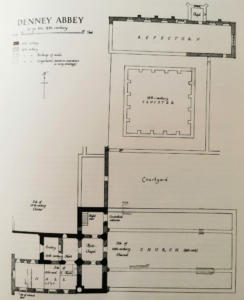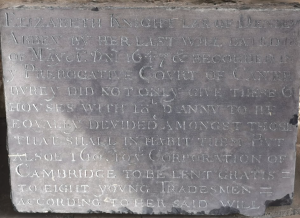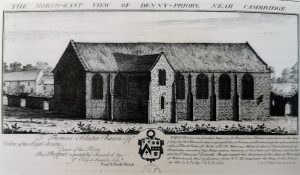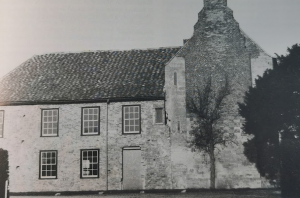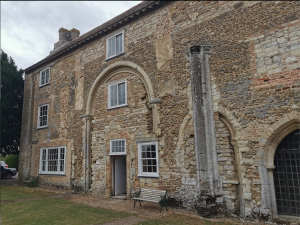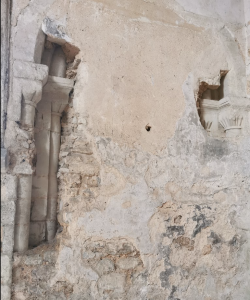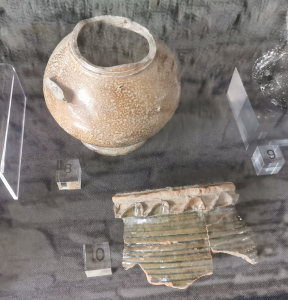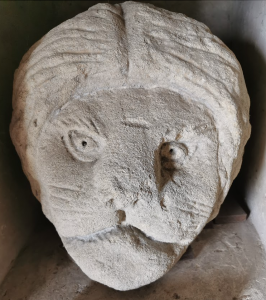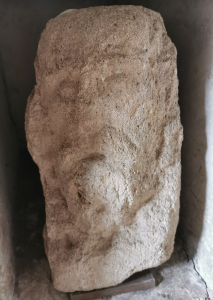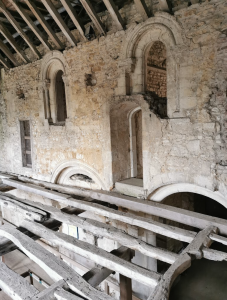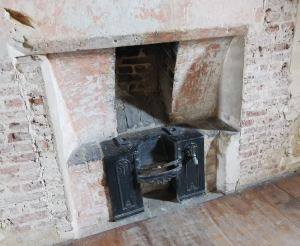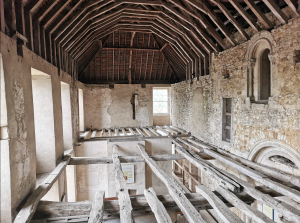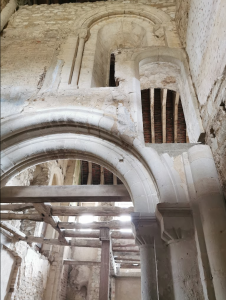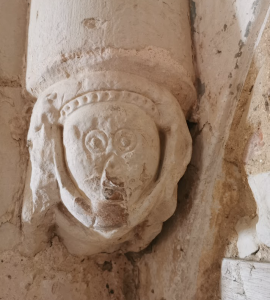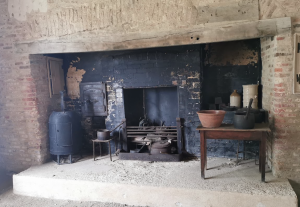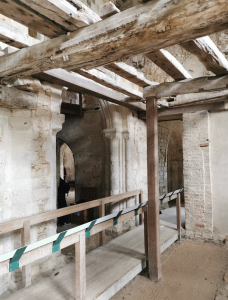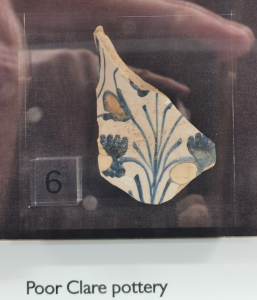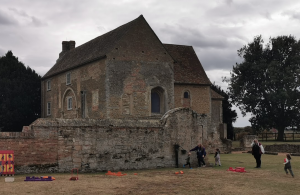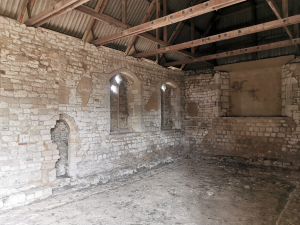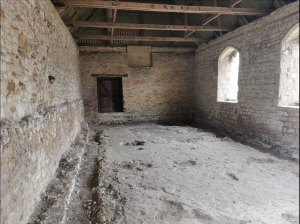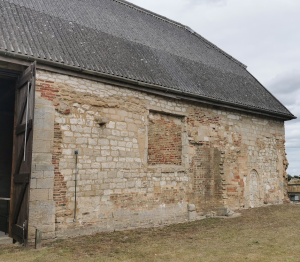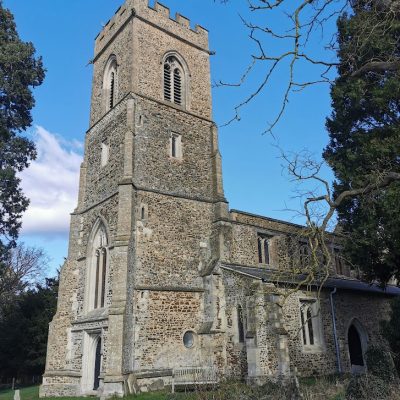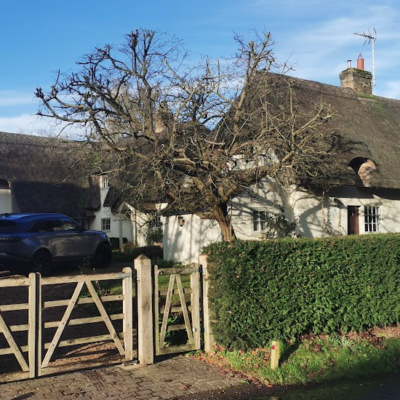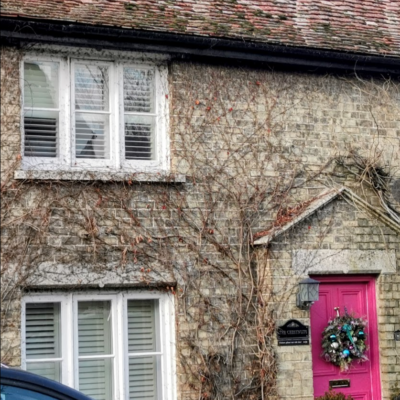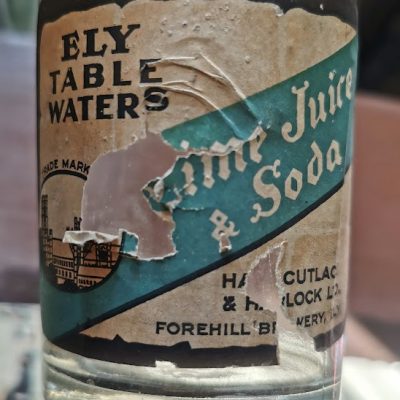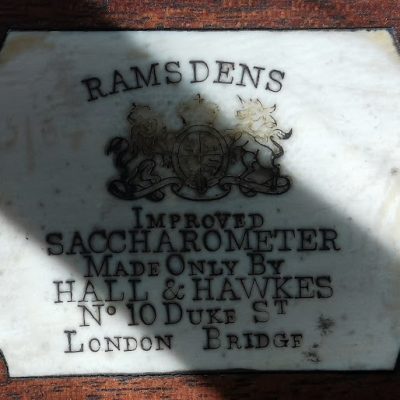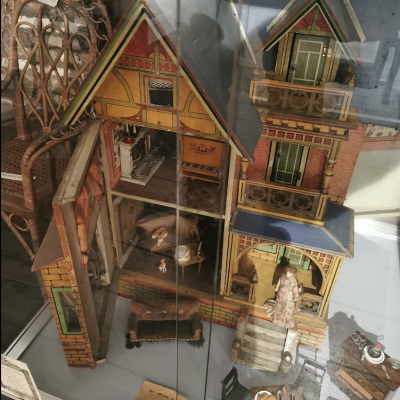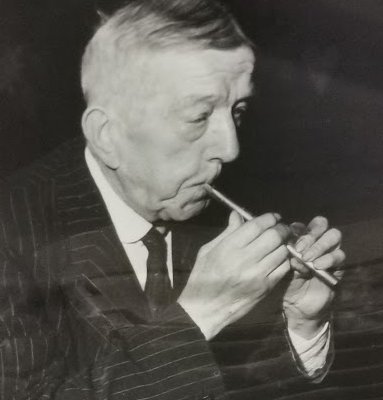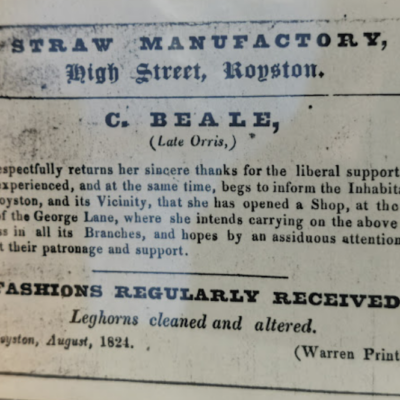Search by topic
- archaeology
- Building of Local Interest
- charity
- church
- crime
- dressmaker
- fire
- Great Eastern Railway
- Listed building
- Mapping Relief
- medieval
- oral history
- poverty
- Public House
- Rattee & Kett
- Religious House
- Roman
- scholar
- school
- Then and Now
- tudor
- women
- work
- world war one
- world war two
Search by text
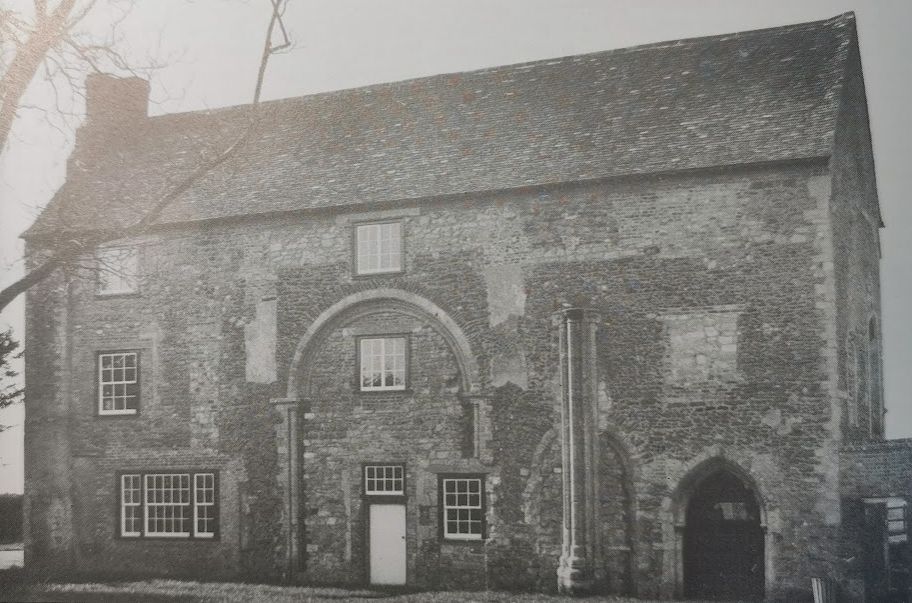 Denny abbey, central crossing of Benedictine church (Religious Houses of Cambs, 1988)
Denny abbey, central crossing of Benedictine church (Religious Houses of Cambs, 1988)Denny (Denney) Abbey, Ely Road, Waterbeach
History of Denny Abbey
Listed building:
Benedictine abbey church remains c.1150; later C12 and C13 additions by Knights Templars. Converted to Franciscan nunnery in C14 by the Countess of Pembroke (d.1377), and farmhouse after the Dissolution with further C18 and C19 alterations.
Refectory of Franciscan nunnery c.1340
Rebuilt C16 and C17, and west wall C17 and C18. Converted before 1730 to an eight-bayed barn with thatched roof.
Aisled barn. C17. Reused medieval limestone ashlar blocks and gault brick.
‘For Her Good Estate‘ by Frances A Underhill (2020) describes the friendship of Elizabeth de Burgh and Mary de St Pol. Mary exercised control over the nunneries at Denny and at Waterbeach. The Waterbeach community she eventually relocated to Denny.
Denny is a small island of high ground surrounded by low historically waterlogged land. Archaeologists have found fragments of Roman pottery and a raised earth track. This a suggests a farm in Roman times. Rubbish pits and grinding stones from this time have been found.
Sometime before 1159 a church dedicated to St James and St Leonard was built at Denny by one Robert, Chamberlain to Duke Conan 4th of Brittany. It was first lived in by Benedictines from Ely, but in 1170 the priory was transferred to the Knights Templar. In the early 13th century it became a hospital exclusively for the old and inform members of the Order. The templars built a separate small house adjoining the house. They also construacted many of the earthworks, ponds and water channels.When the order was suppressed in 1308, ten or eleven brethren were arrested here.
In 1327 Denny Abbey was given to the Countess of Pembroke. It was not reoccupied until 1339 when Mary de Valence, the Countess of Pembroke, moved the Franciscan Order of Minoresses, known as the Poor Clares, from Waterbeach to Denny. She built a new large church and refectory for the nuns. She put a floor into the original church and joined the separate Templar priest house into the building with a two-storey extension. This enabled the older church to be converted into domestic quarters for herself and also guest accommodation.
At the time of the Dissolution there were 35 nuns. The estate was sold to Edward Elrington. In the 16th century most buildings were destroyed but the nave of the church was converted into a barn. Because part of the building had been converted in the 12th cent to a high status dwelling, this part survived as a farmhouse.
Between 1830 and 1854 the Abbey was leased to the Witt family. John George Witt was born in 1836 and lived at the Abbey until the age of 14. He recalled the Irish who came during the harvest to work. They cooked outside and slept in the barns.
1647
Text:
ELIZABETH KNIGHT LAR OF DENNEY ABBEY BY HER LAST WILL DATED 18 OF MAY ????? 1647 & RECORDED IN Y PREROGATIVE COURT OF CANTERBUREY DID NOT ONLY GIVE THESE 6 HOUSES WITH £18 P ANNU TO BE EQUALLY DIVIDED AMONGST THOSE THAT SHALL INHABIT THEM BUT ALSO £160 TO THE CORPORATION OF CAMBRIDGE TO BE LENT GRATIS TO EIGHT YOUNG TRADESMEN ACCORDING TO HER SAID WILL
The 1773 sketch shows the first floor window inserted in the crossing (14th cent) that enabled the occupant to watch services in the nuns’ church.
1841 census: Denny Abbey
James Witt, 40, farmer
Sarah, 35,
Adelisa, 6,
John, 4,
George, 2,
Gertrude, 7 ms,
Jane Houston, 20, governess,
Sarah Covile, 20, servant,
Charles Spicer, 30, servant
Thomas Mansfield, 50, ag. lab.
In 1861 the Witt family are occupying the Manor House, Swaffham Prior. exactly which Manor House is uncertain.
1851 Denny Abbey
John Wyatt, 54, Ag bailiff, b Southey
Elizabeth, 44, b Pidley
Mark, 14, b Pidley
Jonathan Howel, lodger, 28, b Southey
1861 Denny Abbey
Henry Wiles, 56, farmer 594 acres employing 25 men and 10 boys, b Southoe
Sarah, 42, b Landbeach
Katharine J, 1, b Swavesey
Alice Sarah, b Swavesey
Annette Laura, 11, b Swavesey
Anna Maria N Rowbottom, 29, governess, b London
Susan M S Crocke, 19, b Soham
Ann Clark, 21, servant, b Burwell
Mary Ann Nottage, 20, servant, b Bottisham
1871
Henry Wiles, 56, farmer of 594 acres employing 22 men and 6 boys, b Southam
Sarah, 52,
Katharine Joanna, 26,
Alice Sarah, 24,
Mary Dever, 22, servant, b Suffolk
Mary Waites, 68, b Willingham
1881
Richard Toller, 53, farmer of 600 acres employing 15 men and 8 boys, b Lapley Hunts
Sarah, 40, b Cambridge
Sarah, 11, b Trumpington
Edith, 9, b Trumpington
Lucy, 6, b Waterbeach
Mabel R, 2, b Waterbeach
Louisa M Lovell, governess, 25, b Huntingdon
Martha Coulson, 20, b Cottenham
Amelia Butler, 17, b Cottenham
Julia Leach, 16, b Warerbeach
1883
William Dimock became tenant then later bought the farm.
1891 Denny Abbey
Edward Dimock, head, 51, farmer, b Stretham
Matilda, 47, b Stretham
John, 21, b Downham
Sarah, 20, b Wicken
Claud, 19, dental student, b Wicken
Gertrude, 16, b Stretham
Florence, 13, b Stretham
Roger, 10, b Stretham
Charles Cudworth, head, 40, agricultural labourer, b Waterbeach
Elizabeth, 39, b Cottenham
George Edmond, 15, agricultural labourer, b Waterbeach
Beatrice Elsie, 14, b Waterbeach
David Charles, 11, b Waterbeach
Ernest James, 8, b Waterbeach
Amelia Ellen, 7, b Waterbeach
Elizabeth Sarah, 5, b Waterbeach
Emma Eliza, 5, b Waterbeach
William Thomas, 4mos, b Waterbeach
1891
Edward Dimock, head, 51, farmer, b Stretham
Matilda, 47, b Stretham
John, 21, b Downham
Sarah, 20, b Wicken
Claud, 19, dental student, b Wicken
Gertrude, 16, b Stretham
Florence, 13, b Stretham
Roger, 10, b Stretham
1901
John Charles Dimock, head, 32, farmer, b Downham
Sarah Elizabeth, 30, b Wicken
Charles Cudworth, head, 50, foreman at farm, b Waterbeach
Elizabeth, 49, b Cottenham
Ernest James, 19, labourer, b Waterbeach
Emma Eliza, 13, b Waterbeach
1911
John Charles Dimock, 42, farmer, b Downham
Elizabeth Geraldine Miriam, 26, wife, b Scotland
Edward Millar, 6, b Waterbeach
Humphrey Roger, 4, b Waterbeach
John Robert, 3, b Waterbeach
Elizabeth Blanche Mervyn, 1.5, b Waterbeach
Suzanne Alice Marie Yang, visitor, 25, b France
Emily Jane Merryweather, 33, cook, b Hadstock
Violet Primula Watts, 25, nurse, b Waterbeach
1928
The Dimocks sold the land to Pembroke College. Chivers, the jam makers became tenants until the Second World War. During WWII Italian prisoners worked at the farm. After the war the site was taken over by the government to protect it. The farm wa sold off separately to the martins who were farmers at Littleport.
https://en.wikipedia.org/wiki/Denny_Abbey
The refectory was built by the Countess of Pembroke circa 1350. The floor was made of tiles. After the Dissolution, 1539, the building was used for hundreds of years to store grain. Parts of the building were rebuilt in brick.
Contribute
Do you have any information about the people or places in this article? If so, then please let us know using the Contact page or by emailing capturingcambridge@
License
This work is licensed under CC BY-NC-SA 4.0





